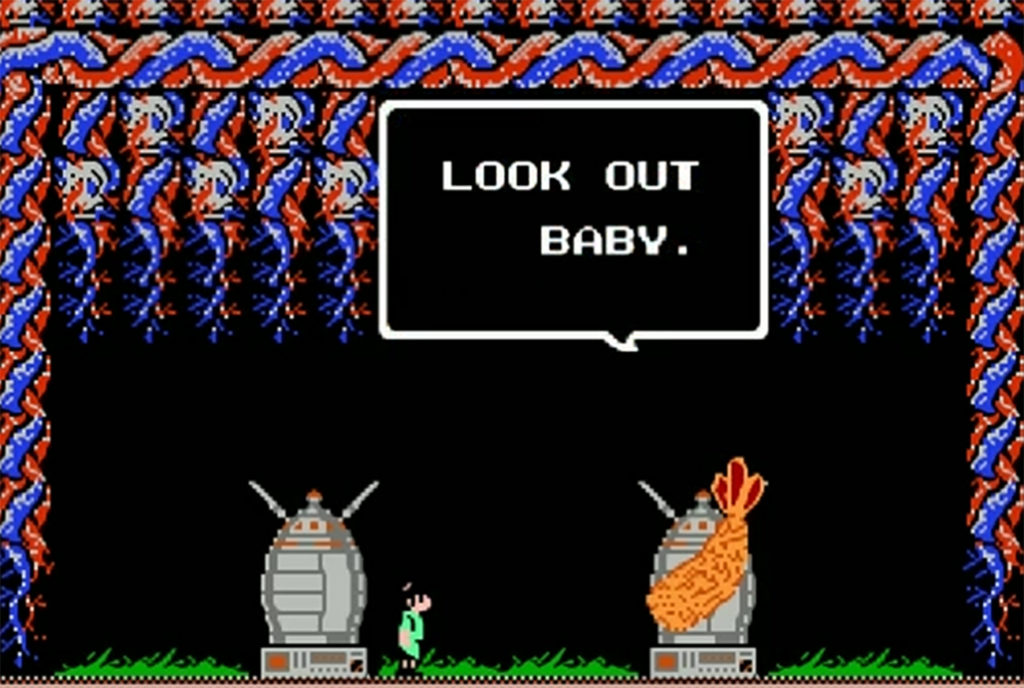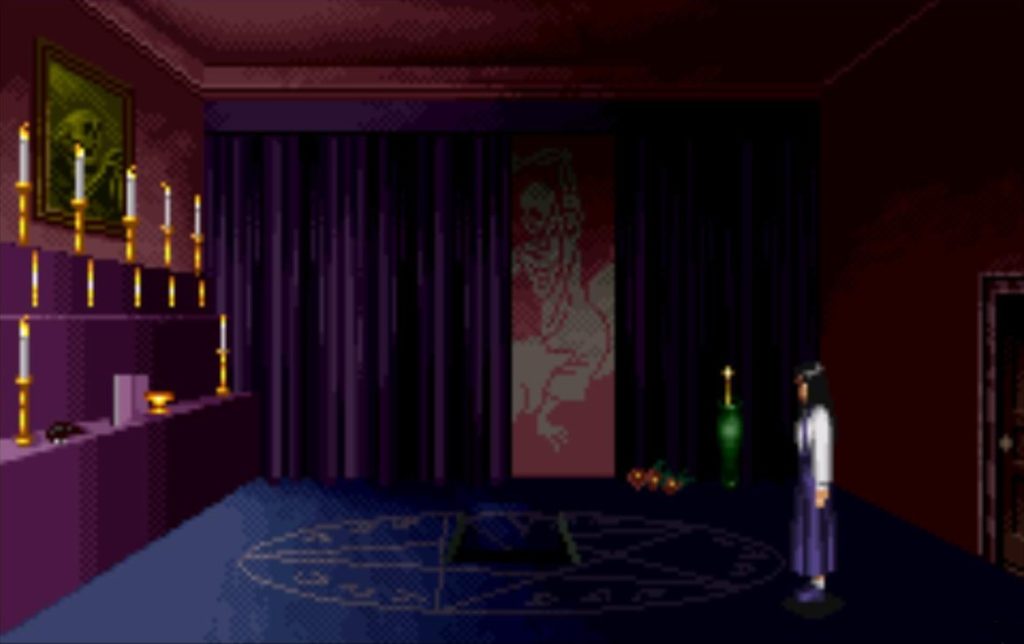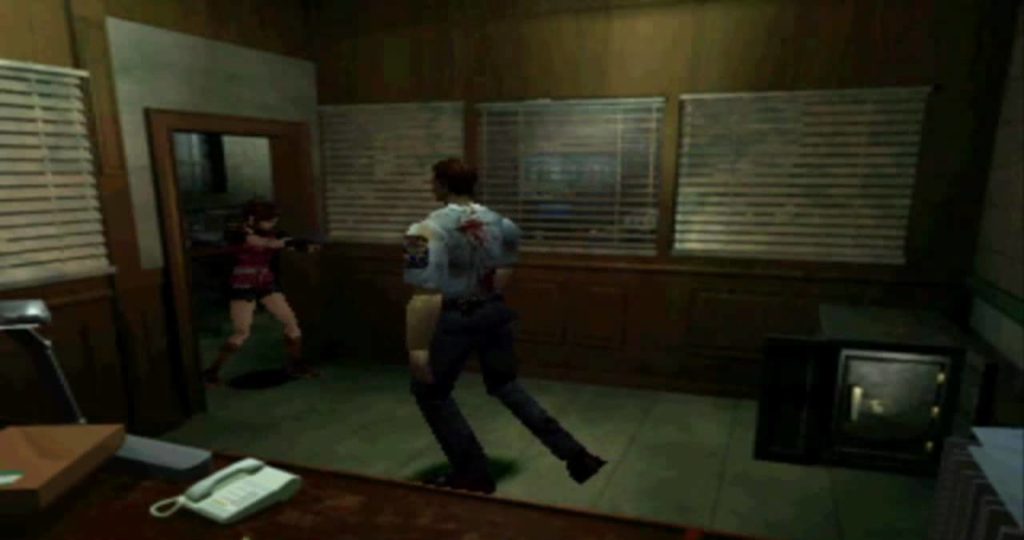Horror has always had a home with gamers. From the earliest Atari games to more modern VR Nightmares, developers have always pushed the limits of technology….and taste. To honour some of the classic horror games of the 80s, 90s and 2000s we’ve collected a killer list of landmark titles to rediscover.
Splatterhouse

Developer: Namco
Year: 1989
Platform: TurboGrafx 16
“The horrifying theme of this game may be inappropriate for young children… and cowards.” ….reads the warning on the box off classic horror games Splatterhouse, (スプラッターハウス, Supurattāhausu) a Japanese arcade brawler developed and published by Namco. First hitting the shores of North America for the forgotten TurboGrafx-16 console, the game was heavily influenced by American slasher films and the works of horror writer H. P. Lovecraft. In it, Two students at the local university, Rick and Jennifer, take refuge from a storm in West Mansion, a local landmark known as “Splatterhouse” for the rumours of hideous experiments purportedly conducted there by the evil Dr. West. Jennifer is kidnapped. Rick is transformed into an unstoppable killing machine, and you grab every available wench, axe or arm and start splattering your way to freedom.
Sweet Home

Developer: Capcom
Year: 1989
Platform: NES
Sweet Home is widely praised as a classic horror game and is often cited for laying the groundwork for the modern survival horror genre. Based on an obscure Japanese horror film, Sweet Home is one of the few “game of the movie” tie-ins that could claim to be better its source material. In it, a team of documentary makers visit the dilapidated home of artist Ichirō Mamiy, only to find themselves trapped in the decaying mansion by an unknown entity. In standard horror fashion, the team splits up (why?) to search the mansion hoping to find some of the lost artwork of Mamiy and find a way out of the house. Instead, they find the place filled with monsters and meet their grisly end unless you, the player, can escape.
While obviously basic by today standards, it nevertheless still holds its own almost 35 years later with a few good scares and some great 8-bit gore. Sweet Home‘s Metroidvania-style exploration, storytelling methods, and horror elements have been cited as precursors to key elements found in other successful games decades later. It served as the main inspiration behind Resident Evil (1996) which was a massive critical and commercial success, launching a multimedia franchise, and it’s inventive style of combat and inventory control remain staples in modern games to this day.
Monster Party

Developer: Human
Year: 1989
Platform: NES
Not all classic Horror games are grim. Monster Party, a bizarre and often forgotten NES game from 1989, follows the adventures of Mark, an average child who embarks on a journey at the request of the alien/bird/dragon thing named “Bert” to the Dark World. En route, the two fuse together; you play as Mark, but can shift into Bert’s form by popping pharmaceuticals.
The game is known for its huge number of goofy bosses, many of whom make no goddamned sense whatsoever. While nothing special in the gameplay department Monster Party in infamous for it’s many references, in jokes and Easter eggs devoted to classic horror films and its a ton of fun. Originally developed by Human Entertainment, makers of the Clock Tower series, the game, oddly, never saw release in its country of origin. A prototype of the cancelled Japanese release finally found its way into the hands of ROM hackers in 2014 who uncovered hidden code that made the already pretty horrific images even more graphic and restored countless enemies that had been altered to avoid copyright, including Xenomorphs, Cenobites and more!
Doom

Developer: ID Software
Year: 1993
Platform: Everything
The undisputed king of classic horror games. DOOM. You know the story: In the future, the player character (an unnamed space marine) has been posted on Mars where secret experiments with teleportation accidentally opens the doors of Hell. From there it’s a non stop satanic splatterfest through corroded corridors and toxic terrain seen head on. Doom helped define the FPS (first person shooter) genre revolutionized 3D graphics forever and inspired numerous similar games, known as “Doom clones” for almost 30 years. It is one of the most significant games in video game history and is frequently cited as one of the greatest games of all time, becoming a massive hit with sales in the tens of millions. However, its graphic violence and hellish imagery also made it a subject of controversy. The level of gore and violence was unprecedented, and the game was full of unrepentantly satanic symbols. Parents worldwide deplored “Doom,” and many a young gamer was forced to play only when home alone. Further controversy was stirred up when the perpetrators of the 1999 Columbine High School shootings were revealed to have been fans of the game, ensuring “Doom” would remain in the public conciseness forever.
D

Developer: WARP
Year: 1993
Platform: Panasonic 3DO
An early example of a classic horror game having style over substance, “D” tells the story of Laura Harris, a student in San Francisco who learns that her father, Dr. Richter Harris, has apparently gone mad. Director of a Los Angeles hospital, Richter goes on a killing spree, murdering hospital staff and patients alike. However, Laura is sucked into an alternate dimension, a world created within her father’s mind, filled with esoteric puzzles and grizzly, macabre displays rendered in glorious early 90s CGI. While not a great game to actually play, “D” was revolutionary for its time.
While laughable today, the 3D depictions of death and torture were groundbreaking, and notorious designer Kenji Eno believed D’s violent, cannibalistic themes would be deemed taboo or too horrifying by others and feared the game would never be released. With this in mind, Eno kept many of the violent sequences a secret, including from other members of his studio, rendering them himself after hours on Amiga workstations. When the game was finished, he submitted a “clean” version (without the violent and disturbing video content) for approval. He deliberately submitted the master late, knowing that part of his penalty would require him to hand-deliver it to the manufacturers in the United States. While on the plane ride to the US, he switched the “clean” discs with the finalized discs that included his horrific content, thus completely bypassing all censorship and ensuring his place in Horror game history.
Clock Tower: The First Fear

Developer: Human
Year: 1995
Platform: Playstation
One of the most enjoyable entries on our classic horror game list, Clock Tower‘s plot and artistic style are inspired by the works of Italian horror film director Dario Argento, most notably Phenomena(1985). Game Director Hifumi Kono loved Giallo horror films and wanted the game to feel like one, so every scene is eerily atmospheric and gives the game a totally unique look compared to other releases from the era. The story follows orphan Jennifer Simpson (modelled after Jennifer Connolly) soon after she is adopted by the wealthy Barrows family along with other orphaned girls. With the shocking introduction of Scissorman, a deformed orphan and the game’s main villain, one of the other children is killed. Jennifer must then explore the Barrows Mansion to find a way to escape while evading Scissorman, leading to one of the game’s many endings. Clock Tower has been called a “paragon for future horror games” and is considered instrumental in establishing the survival horror genre.
Resident Evil

Developer: Capcom
Year: 1996
Platform: Playstation
Resident Evil is one of the most recognizable franchises in gaming. Few games have had such a prolific presence over the last few decades then Shinji Mikami’s combat driven zombie soap opera, spanning two decades of software, movies and comics.
The development of the classic horror game Resident Evil, released as Biohazard in Japan, began in 1993 when Capcom told developer Shinji Mikami and his co-workers to create a game using elements from their classic 1989 game Sweet Home. Initially featuring a supernatural, psychological Japanese horror style similar to Sweet Home, the designers instead opted for an American zombie horror style influenced by George Romero films…and the rest is history.
Wildly successful and in-turn influential on pop-culture, Resident Evil was considered instrumental in re-sparking interest in the Zombie genre. Screenwriter-director Alex Garland credited the Resident Evil series as a primary influence on his script for 28 Days Later, and Time has named it one of the 100 greatest video games of all time.
Silent Hill

Developer: Konami
Year: 1999
Platform: Playstation
While often compared to ‘Resident Evil’, Konami’s classic horror game “Silent Hill is inspired by much more subtle source material than Resident Evil. While Capcom’s wildly successful franchise is built from the DNA of horror maestros like George A Romero, Tobe Hooper and Lucio Fulci, Konami’s development studio, codenamed “Team Silent” and led by first time director Keiichirō Toyama, were much more influenced by the works of David Lynch and Dario Argento. Silent Hill casts a dark shadow, where abandoned amusement parks and sinister gothic lodges loom large in the background and everyone left alive speaks in riddles. As in any Argento movie, the game’s world is filled with occultist icons and powerful demons itching to be summoned. Meanwhile, lead artist Takayoshi Sato drew from the work of Francis Bacon, whose bizarre and disturbing portraits of people in states of disfigurement inspired the game’s iconic monsters, like the unforgettable Pyramid Heads. Sound, too, is deftly employed to induce terror. Audio director Akira Yamaoka used and manipulated sounds from everyday life – construction site equipment, idling engines, dripping taps, bells and clocks – to create a sense of twisted familiarity. While Resident Evil’s philosophy of “less chatter, more splatter” has worked for twenty years, Silent Hill’s stayed in our minds by telling a story of internal conflict and psychological breakdown. Blackouts and nightmare sequences suggest the player is hallucinating, other characters continually question reality and the plot wildly contradicts itself, breaking the 4th wall several times in the series. Every tense, dark, weird horror game that followed owes a debt to the craft of Silent Hill.